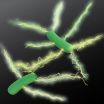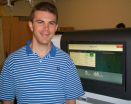INFORMATION:
The work involved collaborators from Aarhus University in Denmark and was supported by the Office of Naval Research (ONR), the Army Research Office (ARO), the National Science Foundation (NSF), the National Institutes of Health (NIH), and the Wyss Institute for Biologically Inspired Engineering at Harvard University.
About the Wyss Institute for Biologically Inspired Engineering at Harvard University
The Wyss Institute for Biologically Inspired Engineering at Harvard University uses Nature's design principles to develop bioinspired materials and devices that will transform medicine and create a more sustainable world. Working as an alliance among all of Harvard's Schools, and in partnership with Beth Israel Deaconess Medical Center, Brigham and Women's Hospital, Boston Children's Hospital, Dana Farber Cancer Institute, Massachusetts General Hospital, the University of Massachusetts Medical School, Spaulding Rehabilitation Hospital, Boston University, Tufts University, Charité - Universitätsmedizin Berlin, and the University of Zurich, the Institute crosses disciplinary and institutional barriers to engage in high-risk research that leads to transformative technological breakthroughs. By emulating Nature's principles for self-organizing and self-regulating, Wyss researchers are developing innovative new engineering solutions for healthcare, energy, architecture, robotics, and manufacturing. These technologies are translated into commercial products and therapies through collaborations with clinical investigators, corporate alliances, and new start-ups.
Crystallizing the DNA nanotechnology dream
Scientists have designed the first large DNA crystals with precisely prescribed depths and complex 3D features, which could create revolutionary nanodevices
2014-10-19
(Press-News.org) DNA has garnered attention for its potential as a programmable material platform that could spawn entire new and revolutionary nanodevices in computer science, microscopy, biology, and more. Researchers have been working to master the ability to coax DNA molecules to self assemble into the precise shapes and sizes needed in order to fully realize these nanotechnology dreams.
For the last 20 years, scientists have tried to design large DNA crystals with precisely prescribed depth and complex features – a design quest just fulfilled by a team at Harvard's Wyss Institute for Biologically Inspired Engineering. The team built 32 DNA crystals with precisely-defined depth and an assortment of sophisticated three-dimensional (3D) features, an advance reported in Nature Chemistry.
The team used their "DNA-brick self-assembly" method, which was first unveiled in a 2012 Science publication when they created more than 100 3D complex nanostructures about the size of viruses. The newly-achieved periodic crystal structures are more than 1000 times larger than those discrete DNA brick structures, sizing up closer to a speck of dust, which is actually quite large in the world of DNA nanotechnology.
"We are very pleased that our DNA brick approach has solved this challenge," said senior author and Wyss Institute Core Faculty member Peng Yin, Ph.D., who is also an Associate Professor of Systems Biology at Harvard Medical School, "and we were actually surprised by how well it works."
Scientists have struggled to crystallize complex 3D DNA nanostructures using more conventional self-assembly methods. The risk of error tends to increase with the complexity of the structural repeating units and the size of the DNA crystal to be assembled.
The DNA brick method uses short, synthetic strands of DNA that work like interlocking Lego® bricks to build complex structures. Structures are first designed using a computer model of a molecular cube, which becomes a master canvas. Each brick is added or removed independently from the 3D master canvas to arrive at the desired shape – and then the design is put into action: the DNA strands that would match up to achieve the desired structure are mixed together and self assemble to achieve the designed crystal structures.
"Therein lies the key distinguishing feature of our design strategy—its modularity," said co-lead author Yonggang Ke, Ph.D., formerly a Wyss Institute Postdoctoral Fellow and now an assistant professor at the Georgia Institute of Technology and Emory University. "The ability to simply add or remove pieces from the master canvas makes it easy to create virtually any design."
The modularity also makes it relatively easy to precisely define the crystal depth. "This is the first time anyone has demonstrated the ability to rationally design crystal depth with nanometer precision, up to 80 nm in this study," Ke said. In contrast, previous two-dimensional DNA lattices are typically single-layer structures with only 2 nm depth.
"DNA crystals are attractive for nanotechnology applications because they are comprised of repeating structural units that provide an ideal template for scalable design features", said co-lead author graduate student Luvena Ong.
Furthermore, as part of this study the team demonstrated the ability to position gold nanoparticles into prescribed 2D architectures less than two nanometers apart from each other along the crystal structure – a critical feature for future quantum devices and a significant technical advance for their scalable production, said co-lead author Wei Sun, Ph.D., Wyss Institute Postdoctoral Fellow.
"My preconceived notions of the limitations of DNA have been consistently shattered by our new advances in DNA nanotechnology," said William Shih, Ph.D., who is co-author of the study and a Wyss Institute Founding Core Faculty member, as well as Associate Professor in the Department of Biological Chemistry and Molecular Pharmacology at Harvard Medical School and the Department of Cancer Biology at the Dana-Farber Cancer Institute. "DNA nanotechnology now makes it possible for us to assemble, in a programmable way, prescribed structures rivaling the complexity of many molecular machines we see in Nature."
"Peng's team is using the DNA-brick self-assembly method to build the foundation for the new landscape of DNA nanotechnology at an impressive pace," said Wyss Institute Founding Director Don Ingber, M.D., Ph.D. "What have been mere visions of how the DNA molecule could be used to advance everything from the semiconductor industry to biophysics are fast becoming realities."
ELSE PRESS RELEASES FROM THIS DATE:
Imaging electric charge propagating along microbial nanowires
2014-10-19
AMHERST, Mass. ¬– The claim by microbiologist Derek Lovley and colleagues at the University of Massachusetts Amherst that the microbe Geobacter produces tiny electrical wires, called microbial nanowires, has been mired in controversy for a decade, but the researchers say a new collaborative study provides stronger evidence than ever to support their claims.
UMass Amherst physicists working with Lovley and colleagues report in the current issue of Nature Nanotechnology that they've used a new imaging technique, electrostatic force microscopy (EFM), to resolve ...
I have anxiety, why is my doctor prescribing an antipsychotic?
2014-10-19
Berlin, 19th October 2014 What's in a name? Doctors have found that the name of the drug you are prescribed significantly influences how the patient sees the treatment. Now in a significant shift, the world's major psychiatry organisations are proposing to completely change the terminology of the drugs used in mental disorders shifting it from symptom based (e.g. antidepressant, antipsychotic etc.) to pharmacologically based (e.g. focusing on pharmacological target (serotonin, dopamine etc.) and the relevant mode of action). This will mean that patient will no longer have ...
Major breakthrough could help detoxify pollutants
2014-10-19
Scientists at The University of Manchester hope a major breakthrough could lead to more effective methods for detoxifying dangerous pollutants like PCBs and dioxins. The result is a culmination of 15 years of research and has been published in Nature. It details how certain organisms manage to lower the toxicity of pollutants.
The team at the Manchester Institute of Biotechnology were investigating how some natural organisms manage to lower the level of toxicity and shorten the life span of several notorious pollutants.
Professor David Leys explains the research: ...
New insight that 'mega' cells control the growth of blood-producing cells
2014-10-19
Kansas City, MO - While megakaryocytes are best known for producing platelets that heal wounds, these "mega" cells found in bone marrow also play a critical role in regulating stem cells according to new research from the Stowers Institute for Medical Research. In fact, hematopoietic stem cells differentiate to generate megakaryocytes in bone marrow. The Stowers study is the first to show that hematopoietic stem cells (the parent cells) can be directly controlled by their own progeny (megakaryocytes).
The findings from the lab Stowers Investigator Linheng Li, Ph.D., described ...
Many older people have mutations linked to leukemia, lymphoma in their blood cells
2014-10-19
At least 2 percent of people over age 40 and 5 percent of people over 70 have mutations linked to leukemia and lymphoma in their blood cells, according to new research at Washington University School of Medicine in St. Louis.
Mutations in the body's cells randomly accumulate as part of the aging process, and most are harmless. For some people, genetic changes in blood cells can develop in genes that play roles in initiating leukemia and lymphoma even though such people don't have the blood cancers, the scientists report Oct. 19 in Nature Medicine.
The findings, based ...
Tear duct implant effective at reducing pain and inflammation in cataract surgery patients
2014-10-19
CHICAGO – Oct. 19, 2014 – The first tear duct implant developed to treat inflammation and pain following cataract surgery has been shown to be a reliable alternative to medicated eye drops, which are the current standard of care, according to a study presented today at AAO 2014, the 118th annual meeting of the American Academy of Ophthalmology. The device, known as a punctum plug, automatically delivers the correct amount of postoperative medication in patients, potentially solving the issue of poor compliance with self-administering eye drops.
After cataract ...
Children's genes affect their mothers' risk of rheumatoid arthritis
2014-10-19
BETHESDA, MD – A child's genetic makeup may contribute to his or her mother's risk of rheumatoid arthritis, possibly explaining why women are at higher risk of developing the disease than men. This research will be presented Tuesday, October 21, at the American Society of Human Genetics (ASHG) 2014 Annual Meeting in San Diego.
Rheumatoid arthritis, a painful inflammatory condition that primarily affects the joints, has been tied to a variety of genetic and environmental factors, including lifestyle factors and previous infections. Women are three times more likely ...
Scientists identify mutation associated with cleft palate in humans and dogs
2014-10-19
BETHESDA, MD – Scientists studying birth defects in humans and purebred dogs have identified an association between cleft lip and cleft palate – conditions that occur when the lip and mouth fail to form properly during pregnancy – and a mutation in the ADAMTS20 gene. Their findings were presented today at the American Society of Human Genetics (ASHG) 2014 Annual Meeting in San Diego.
"These results have potential implications for both human and animal health, by improving our understanding of what causes these birth defects in both species," said Zena ...
Women more likely to develop anxiety and depression after heart attack
2014-10-19
Geneva, Switzerland – 19 October 2014: Women are more likely to develop anxiety and depression after a heart attack (myocardial infarction; MI) than men, according to research presented at Acute Cardiovascular Care 2014 by Professor Pranas Serpytis from Lithuania.
Acute Cardiovascular Care is the annual meeting of the Acute Cardiovascular Care Association (ACCA) of the European Society of Cardiology (ESC) and takes place 18-20 October in Geneva, Switzerland.
Professor Serpytis said: "The World Health Organization predicts that by 2020 depression will be the second ...
Gene duplications associated with autism evolved recently in human history
2014-10-19
BETHESDA, MD – Human geneticists have discovered that a region of the genome associated with autism contains genetic variation that evolved in the last 250,000 years, after the divergence of humans from ancient hominids, and likely plays an important role in disease. Their findings were presented today at the American Society of Human Genetics (ASHG) 2014 Annual Meeting in San Diego.
Researchers at the University of Washington analyzed the genomes of 2,551 humans, 86 apes, one Neanderthal, and one Denisovan. They closely examined a region of human chromosome 16 ...
LAST 30 PRESS RELEASES:
Numbers in our sights affect how we perceive space
SIMJ announces global collaborative book project in commemoration of its 75th anniversary
Air pollution exposure and birth weight
Obstructive sleep apnea risk and mental health conditions among older adults
How talking slows eye movements behind the wheel
The Ceramic Society of Japan’s Oxoate Ceramics Research Association launches new international book project
Heart-brain connection: international study reveals the role of the vagus nerve in keeping the heart young
Researchers identify Rb1 as a predictive biomarker for a new therapeutic strategy in some breast cancers
Survey reveals ethical gaps slowing AI adoption in pediatric surgery
Stimulant ADHD medications work differently than thought
AI overestimates how smart people are, according to HSE economists
HSE researchers create genome-wide map of quadruplexes
Scientists boost cell "powerhouses" to burn more calories
Automatic label checking: The missing step in making reliable medical AI
Low daily alcohol intake linked to 50% heightened mouth cancer risk in India
American Meteorological Society announces Rick Spinrad as 2026 President-Elect
Biomass-based carbon capture spotlighted in newly released global climate webinar recording
Illuminating invisible nano pollutants: advanced bioimaging tracks the full journey of emerging nanoscale contaminants in living systems
How does age affect recovery from spinal cord injury?
Novel AI tool offers prognosis for patients with head and neck cancer
Fathers’ microplastic exposure tied to their children’s metabolic problems
Research validates laboratory model for studying high-grade serous ovarian cancer
SIR 2026 delivers transformative breakthroughs in minimally invasive medicine to improve patient care
Stem Cell Reports most downloaded papers of 2025 highlight the breadth and impact of stem cell research
Oxford-led study estimates NHS spends around 3% of its primary and secondary care budget on the health impacts of heat and cold in England
A researcher’s long quest leads to a smart composite breakthrough
Urban wild bees act as “microbial sensors” of city health.
New study finds where you live affects recovery after a hip fracture
Forecasting the impact of fully automated vehicle adoption on US road traffic injuries
Alcohol-related hospitalizations from 2016 to 2022
[Press-News.org] Crystallizing the DNA nanotechnology dreamScientists have designed the first large DNA crystals with precisely prescribed depths and complex 3D features, which could create revolutionary nanodevices



